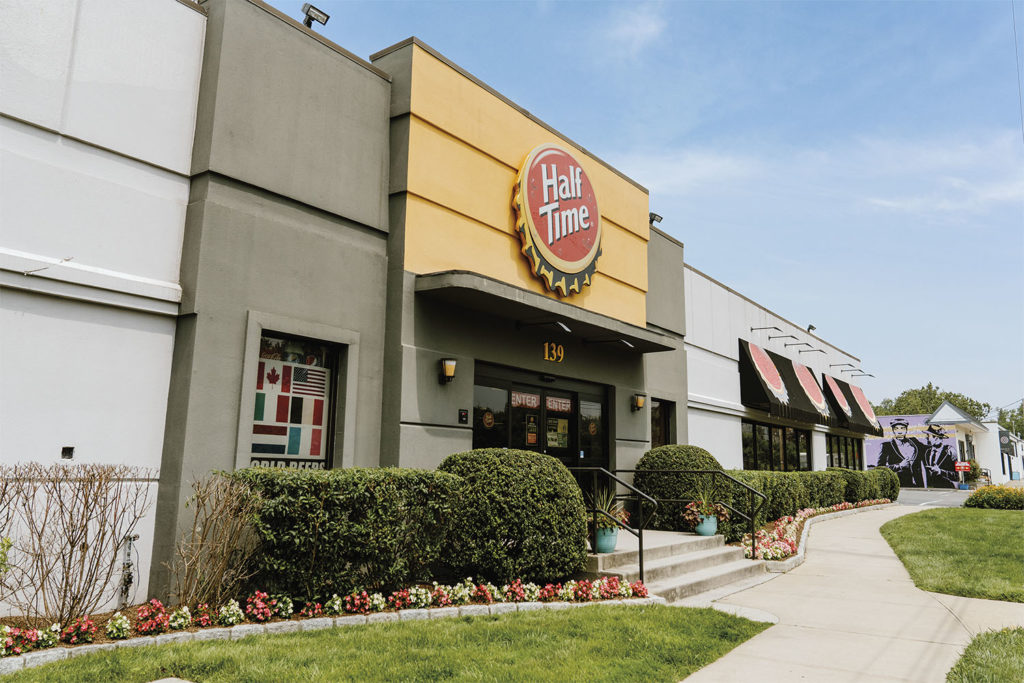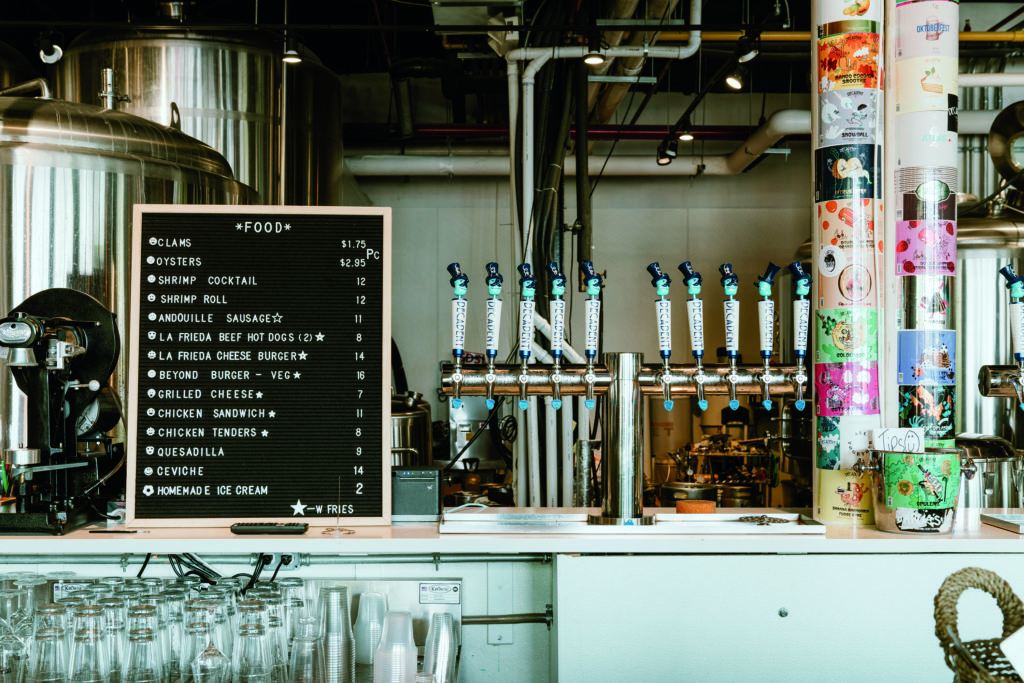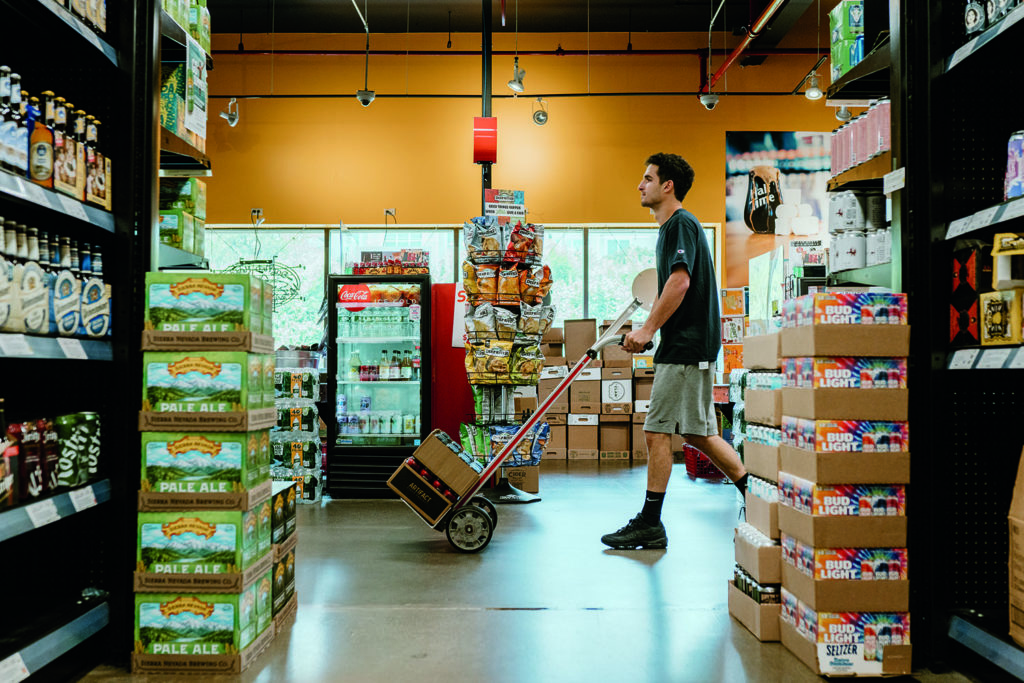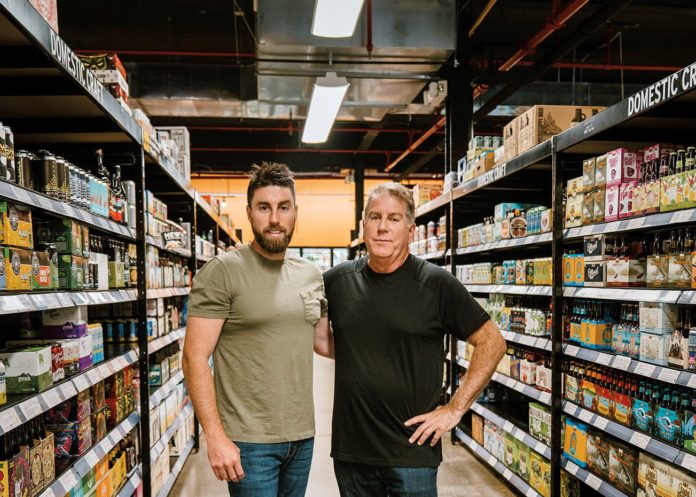Alcohol ecommerce was still largely uncharted territory in the early 2010s when Half Time pushed heavily into online sales. The New York chain, which specializes in craft beer, saw a future where consumers nationwide received personalized alcohol orders from the comfort of their own homes.
“We were early pioneers in it,” recalls Jason Daniels, COO. Daniels and his father Alan, Half Time founder, set up shop online at a time when most alcohol retailers hardly had a website. “We always wanted to be ten years down the road on anything,” Daniels adds. “Sometimes it works out, sometimes it doesn’t.”
With online beer sales, it definitely worked. Half Time, which has locations in Poughkeepsie and Mamaroneck, established itself as the primary place for digital beer sales.
“Google reached out and told us that we ran the cleanest and smoothest beer store online,” Daniels says, “and that we had the number-one SEO for shopping beer online.”
“A decade ago, when I came back to work for my father, he said that there would be this huge push towards general online shopping,” Daniels adds. “He started to see where consumers would want to shop alcohol in the future. And we always tailor our stores based on consumer need.”
A History of Half Time
How Half Time came about is a familiar story in the beverage alcohol industry.
Alan Daniels, a successful entrepreneur, retired in the 2000s. (This after he had grown up in the less-than-privileged neighborhoods of Southie Boston.) Restless in retirement, Alan sought new avenues for his business acumen.
At the same time, American craft beer experienced a second wave. Alan saw opportunity. In 2002 he opened the first Half Time store, in Poughkeepsie. This original location stocks around 600 brews. Wanting better access to “white whale” beers, Alan founded his own distribution company.
He sold that business, Liberty Distribution, in 2007, and focused on retail. The result was the second Half Time location, in Mamaroneck. At 20,000 square feet, this store contains nearly 3,500 beer SKUs — one of if not the largest selections in the world.
The company continued to innovate. Half Time has hosted huge beer fests both in person and virtually. And the retail brand remains at the forefront of craft beer ecommerce.

Selling Beer Online
Alan’s son Jason joined the family retail business in 2011. Around then, Half Time rapidly expanded its online offerings.
“Retail as a whole was shifting,” says Daniels, recalling his father’s calibrations. “In this industry, you’re either ahead of the curve or behind it. We’ve always kept our foot on the gas pedal.”
Today, Half Time ships to around 35,000 zip codes in more than 30 states. This requires building and maintaining a large shipping network, and operating within laws that vary widely from state to state.
“It was a giant learning curve for everyone,” Daniels says. “Working within all those states is a challenge: Do they prefer we work with the national carriers, or the regional carriers?”
“Putting together our network tools took a very long time to orchestrate,” he adds. “Then it was about figuring out what we could do within that network. Staging remains a challenge: Where can we use staging to get the beer out in time.”
Half Time’s focus on innovation proved fortunate when they overhauled their website in early 2019. Beating Covid 19 by a year, Half Time added an array of advanced ecommerce options. These included the ability to perform age and zip code verification on the home page, immediately informing customers whether or not the company ships to their state and zip code.
The new site improved upon existing abilities to create and order mix packs online. Now, Half Time’s website automatically restricts products based on zip code. Certain states disallow particular beers, usually based on higher ABVs.
The upgraded website also provides shoppers with eight different ways to help find products: when these items arrived, domestic or international, style, state, what color the beer is, ABV and price. Half Time offers customizable beer clubs and gift baskets as well.
“The site features not only the best we have to offer, it also picks up on trends across the U.S., which allows us to add in items most people would not think of purchasing in another state altogether,” says Daniels.
One trend that took off during the pandemic was virtual beer festivals. Half Time worked with digital leaders Next Glass and Untappd to create a number of large online tastings in the past year that fundraised for charities.
“That’s been one of the most exciting things I’ve been able to work on,” says Daniels. “A hugely negative thing happened in Covid. My wife is a nurse so we’ve seen first hand how rough it is out in the world during the pandemic. So it was very pleasant to be able to provide some bright light during this dark period with our virtual beer fests.”
These tastings included hard-to-find breweries like Russian River and 450 North. Money raised reached nearly $20,000, benefiting the Last Prison Project, LGBTQ and children’s organizations.
“It was a way to love beer again and drink with people, face-to-face,” Daniels says. “It approached the same feeling you get when you have a glass of beer with someone in a bar or brewery. You forget how important it is meeting with someone in person.”
Now with Covid-19 infections in lower numbers as vaccines roll out, what’s the future for virtual beer events?
“I know there’s a lot of Zoom fatigue, but I think virtual tasting events will continue,” Daniels says. “Some people don’t have the disposable income to travel around the country and track down all these beers.”
Opening a Brewery at Half Time
Half Time’s goal of being everything craft beer continued in 2018 with the opening of their own brewery. Decadent Ales is adjacent to the Mamaroneck store.
“We’ve worked with dozens of breweries in the past 20 years, partnering on beers, but always wanted to get involved ourselves,” says Daniels. “My father, myself and [Decadent Ales Head Brewer] Paul Pignataro wanted the customer experience where you could go into a brewery and have a beer and a burger, and then go shopping at the world’s largest beer store next door.”
As with most anything alcohol, receiving approval for permits required time and patience. Once those passed, Half Time took advantage of their unique operation with a brewery that stands out.
“We didn’t just open another brewery, we opened something unique,” says Daniels. “We wanted over-the-top, wild flavors.”
Decadent Ales lives up to its name with beers that showcase adjuncts. Recent releases include Triple Orange Cream Pop, a 10.1% ABV IPA brewed with orange puree, Madagascar vanilla bean and marshmallow; Peanut Butter Banana Pancake, a 9.1% DIPA ABV made with peanut butter powder, banana and maple syrup; and Tiramisu, a 12.5% Imperial Stout with coffee and chocolate.

“A lot of the times when I taste these kind of beers from other places, their labels list nine ingredients, but mostly I taste the base stout and few of the adjuncts,” Daniels says. “With our beers, if we say we’re putting in marshmallow and peanut butter, you’re tasting marshmallow and peanut butter.”
The decadence extends onto the food menu. Beyond typical pub fare like hot dogs, quesadillas and burgers, the brewery serves raw oysters, a lobster roll and shrimp cocktail. Decadent Ales also began making more traditional lagers and IPAs under a separate brand, Cadence Brewing, in 2020.
“The brewery has been fun, unique and challenging during Covid,” says Daniels. “We still produced beer and we got it out in time. And it’s been fun for me to be part of all three tiers of the industry at one point in time or another. It helps me by being able to shed a light on what everyone in the industry faces. No matter what, I can relate.”
A Family of Employees
Daniels credits the staff for the company’s success.
“Forever, if anyone asks me for the elevator pitch of Half Time, what we are, I talk about our large stores, selection and shipping, but really it comes down to the staff,” he explains. “They are the single most important thing for how we operate.”
Some staff has worked with Half Time for decades. Daniels also praised the employees for their performance during the extraordinary challenges of Covid-19.
“They put on their masks and gloves and got ready for the work environment under Covid,” he says. “Alan and I always try to remain active within our businesses, and we worked side-by-side with our Half Time family. And that’s the term we prefer. We don’t like ’employees’. We truly think of them as like family.”

Such experienced, knowledgeable staff is key in running Half Time’s high level of customer service. Store employees are known (and trained) for their ability to recommend the right beers.
“The training goal is for staff to help customers figure out what they like and what else the customers might like,” Daniels says. “There’s so many breweries out there now, even just local stuff and new styles, that it can be difficult picking out what you like. That’s the benefit of coming to our store: interacting with the staff.”
“Our staff will figure out that if a customer likes to eat XY or Z, or is a whiskey connoisseur, then this beer is probably what they’ll want,” he adds.
The Next Trends
Like elsewhere, hard seltzer and ready-to-drink beverages have taken off at Half Time. Daniels does not anticipate an imminent slowdown.
“With seltzers and RTDs, over the next five, 10, 15, 20 years, I think we’ll see more growth and innovation,” he says. “People just want something different. That’s what Americans always pursue: what’s new.”
Some brewers have criticized the alcohol industry for categorizing seltzers and RTDs alongside craft beer. The fear is that blurred lines could further siphon sales away from craft beer.
“The breweries that pushed back against hard seltzers, fruited seltzers and even IPAs, they all now make these products,” Daniels points out. “Who knows what’s coming out as the next big trend. If people want to drink it, we will carry it.”
“If someone wants to grab a 30 of Bud Light, that’s their prerogative,” he adds. “Same thing if someone wants to buy a $350 Sam Adams Utopia. My job is simply to put out the products.”
Looking ahead, Daniels expects Mexican imports will gain even more momentum as their consumer demo expands. This includes Millennials, who have begun drinking healthier and lighter. Accordingly, Daniels sees consumers buying more baseline beer styles (like Cadence Brewing), hard teas and kombuchas.
“You can’t down a 12% triple IPA on a 90-degree day anymore,” he says.
One trend where Daniels remains skeptical is no-ABV beer.
“I’ve seen a push in the media about those styles, but I have not seen those products go as crazy in our stores as I would have thought,” he says. “I see a couple of brands that are advertising everywhere, but I don’t see the hype in the stores.”
Longer term, he cautions beer retailers against drawing too many conclusions from 2020. The pandemic caused consumers to support local beer, hoard their favorite macro brands and simply drink more in general.
“In 2018-19, we had the dip in craft beer, and then in 2020 the category bounced back because of Covid,” Daniels says. “In 2021 we still have the full tailwind from that pandemic bounce back, and likely the same with 2022. 2023 is the first year when I would first start to look at the data comparisons. I think everything will start to change around that point.”
“How can you take insights and data from a time period when you couldn’t even buy kegs or draft beer, or some name brands because of the shortages?” he adds. “You also had distributors laying off half their staffs, and an influx of breweries shipping beer directly to consumers for the first time.”
However the beer industry evolves in the aftereffects of Covid 19, Half Time remains prepared, as a forward-looking company that explores and embraces whatever comes next.
Kyle Swartz is editor of Beverage Dynamics magazine. Reach him at kswartz@epgmediallc.com or on Twitter @kswartzz. Read his recent piece 9 Alcohol Trends in 2021-22.





